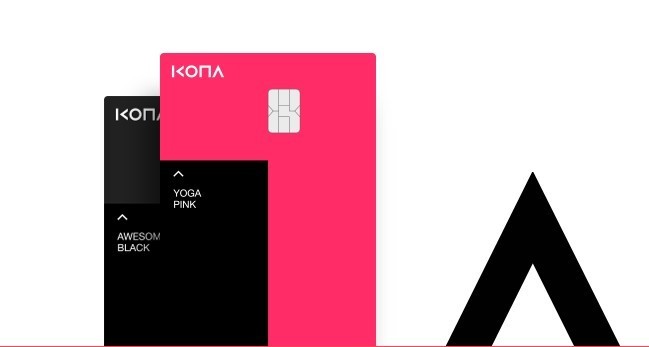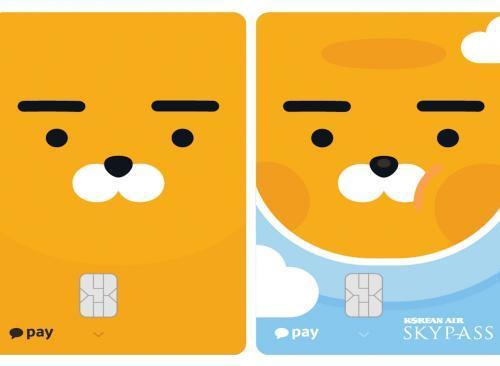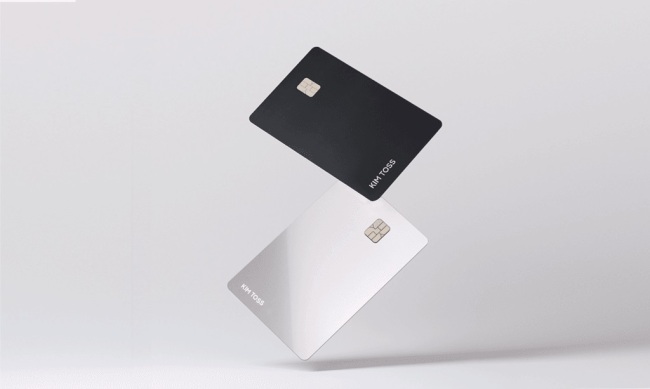In South Korea, credit cards have long dominated the payment scene. Most locals prefer credit cards over other forms of payment and the use of cash is on the wane, particularly among consumers in their 20s and 30s.
But now a new form of payment -- the prepaid card model -- is rising in popularity here, revitalizing cash usage and diversifying the offline payment landscape.
Put simply, “prepaid cards” are cards that people can charge with cash and use like debit cards. Launched by local fintech firms, these cards are easily issued and charged via a mobile app that connects to a bank account of the user’s choice.
 |
(Kona Card) |
To make a payment, you can either swipe the physical card at the cash register or present a digital QR code or bar code generated by the associated mobile app.
Payments made using prepaid cards are subject to the same income tax return rate applied to debit card payments.
In Korea, the major prepaid cards are Kona I’s Kona Card, Viva Republica’s Toss Card and Kakao’s Kakao Pay Card.
Touting convenient charging mechanisms as well as generous discounts and cashback arrangements at various franchise cafes, restaurants and stores, the cards have won over many young, tech-savvy Koreans seeking to establish smarter payment habits.
“Prepaid cards are easy to get and offer various benefits that match or exceed those of credit and debit cards,” said Lee Min-woo, a 29-year-old office worker living in Seoul. “I’m currently using a variety of cards, including prepaid cards, to collect benefits at different outlets.”
For instance, Lee uses the Kona Card to get a 20 percent discount whenever he visits a Coffee Bean store. He also obtained a Toss Card recently to take advantage of its ongoing “10 percent cashback” event.
 |
Kakao Pay Card |
The market for prepaid cards began with the launch of the Kona Card in November 2017. Since then it has enticed customers with generous discounts, such as an automatic 20 percent off at The Coffee Bean & Tea Leaf and conditional discounts of 30 percent at Starbucks and Lotte Cinema, to name a few.
Joining this segment, mobile messaging giant Kakao launched the Kakao Pay Card, another prepaid card, in January 2018. The card can be immediately issued via the KakaoTalk messenger service and connects to a Kakao Pay account that can be charged via a local bank account.
Until last month, customers could get 0.3 percent cash back for all payments made using the Kakao Pay Card -- an attractive offering that brought in more than 1 million users just a year after its launch.
The cashback event was terminated as of last month, igniting user complaints, but the company is said to be working on a new set of benefits.
Most recently, Viva Republica joined the prepaid card business with the launch of the Toss Card last month. The card connects with a bank account that the user can register with the Toss app, which many people already use for money transfers.
As of now, Viva Republica is running a “10 percent cashback” lottery event whereby users are eligible to obtain a 10 percent cash rebate on any winning transaction, with the expectation of a 33 percent success rate. The firm has yet to decide when the promotion will end, but the event has garnered positive reviews so far.
 |
Toss Card |
While prepaid cards have quickly garnered a sizable user base with attractive deals, the question of sustainability is another matter.
Market watchers point out that prepaid cards could lose favor with consumers if the generous promotions were to disappear -- something that already appears to be happening for the sake of profitability, as in the case of Kakao Pay.
In addition, local credit cards are already engaging in fierce competition for customers with various discount offers to retain and lure back customers.
By Sohn Ji-young (
jys@heraldcorp.com)










![[Weekender] Korea's traditional sauce culture gains global recognition](http://res.heraldm.com/phpwas/restmb_idxmake.php?idx=644&simg=/content/image/2024/11/21/20241121050153_0.jpg)